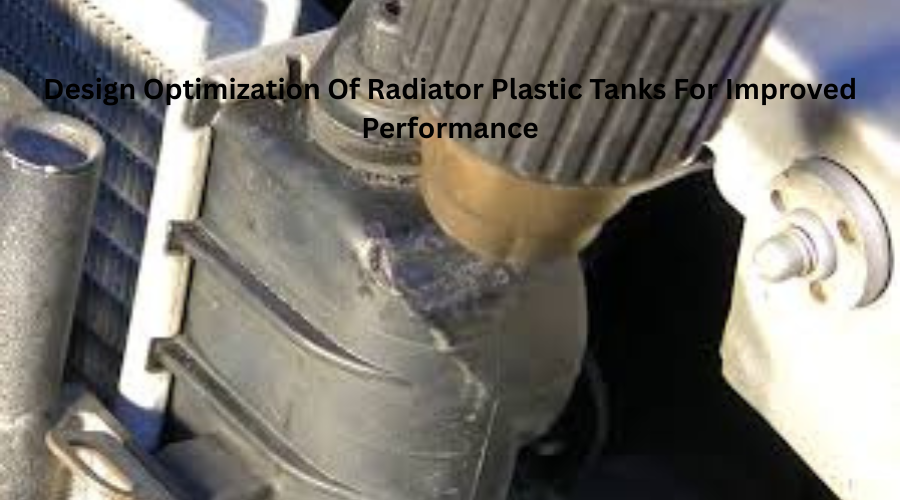How To Properly Maintain Your Radiator Plastic Tank For Optimal Performance?
- linghangtechnology
- Mar 21
- 4 min read

A radiator plastic tank plays a crucial role in your vehicle's cooling system, ensuring that the engine remains at the right temperature for efficient performance. Without proper maintenance, these tanks can develop cracks, leaks, or even fail completely, leading to costly repairs. Whether you're an automotive expert or just someone looking to extend the lifespan of your vehicle, knowing how to care for your radiator plastic tank is essential. If you're looking for reliable parts, you might have come across the term Bulk China radiator plastic tank while searching for high-quality replacements. But before we dive into replacements, let's explore how to maintain your existing radiator plastic tank and keep your cooling system in top condition.
Why Proper Maintenance of Your Radiator Plastic Tank is Important
Many vehicle owners overlook the plastic radiator tank and only pay attention when a problem arises. However, neglecting maintenance can lead to:
Overheating issues that may damage the engine
Leaks and coolant loss, reducing cooling efficiency
Cracked plastic tanks, requiring expensive replacements
Corrosion and blockages restricting coolant flow
By following easy maintenance tasks, you can extend the lifespan of your radiator plastic tank and avoid unnecessary expenses.
Essential Tips for Maintaining Your Radiator Plastic Tank
1. Regularly Inspect for Cracks and Leaks
One of the first signs of trouble is a visible crack or coolant leak around the radiator plastic tank. Over time, extreme temperature changes cause the plastic to expand and contract, making it prone to stress fractures. Here's what you can do:
Check for discoloration or white residue, which may indicate a slow leak.
Inspect hoses and connections to ensure they are tightly secured.
Use a flashlight to look for small hairline cracks that might not be immediately visible.
If you notice any leaks, it's best to address them immediately before they worsen.
2. Flush the Cooling System Regularly
Coolant accumulates debris and contaminants over time, which can clog the radiator and damage the plastic tank. Flushing the system at recommended intervals prevents these issues. Follow these steps:
Check your owner's manual for the recommended coolant flush schedule (usually every 30,000 to 50,000 miles).
Use a quality coolant flush solution to remove buildup.
Recharge the system with fresh coolant, ensuring it meets the manufacturer's specifications.
A clean cooling system not only extends the life of your radiator plastic tank but also improves overall vehicle performance.

3. Use the Right Coolant Mixture
Not every coolant works the same way, and using the incorrect kind can cause corrosion or damage to the radiator plastic tank. Follow these tips:
Mix coolant and water in equal parts to prevent mineral buildup.
Stick to the recommended coolant type for your vehicle (organic acid technology (OAT), inorganic additive technology (IAT), or hybrid organic acid technology (HOAT)).
Avoid mixing different coolant types, as this can lead to gelling or deposits that harm the cooling system.
4. Maintain Proper Coolant Levels
Low coolant levels can cause overheating and increased pressure, which may crack the radiator plastic tank. To ensure proper levels:
Check the coolant tank at least once a month.
If the coolant level is low, top it off with the correct mixture.
Look for any signs of coolant discoloration, which could indicate contamination.
5. Ensure the Radiator Cap is in Good Condition
A faulty radiator cap can cause pressure inconsistencies, leading to leaks or damage to the plastic tank. Make sure the cap:
Fits tightly and is not cracked
Has an intact rubber gasket to ensure a proper seal
Releases pressure correctly to prevent overheating
If your radiator cap is old or worn out, replacing it with a high-quality cap can prevent unnecessary damage to the cooling system.
6. Protect the Radiator Plastic Tank from Excess Heat
Excessive heat exposure weakens plastic over time. You can reduce heat stress by:
Parking in shaded areas to minimize extreme temperature fluctuations
Using a heat shield if your engine generates excessive heat
Avoiding aggressive driving, which increases engine temperature
7. Check for Corrosion and Rust
Although radiator plastic tanks don't rust, the surrounding metal components can corrode, leading to leaks. To prevent this:
Inspect metal brackets and fasteners for rust
Replace corroded parts to prevent stress on the plastic tank
Use an anti-corrosion coolant additive for extra protection
Conclusion
A well-maintained radiator plastic tank ensures your vehicle runs smoothly without overheating or coolant leaks. By regularly inspecting for cracks, flushing the cooling system, using the right coolant, and checking key components like the radiator cap, you can significantly extend the lifespan of your radiator. Scheduled servicing is always cheaper than major repairs, so take the time to care for your cooling system properly. With these steps, you'll not only avoid costly breakdowns but also keep your vehicle running efficiently for years to come.
FAQs
1. How long does a radiator plastic tank last?
A radiator plastic tank can last anywhere between 5 to 10 years, based on maintenance and driving conditions. Regular inspections and proper coolant use can extend its lifespan.
2. Can I repair a cracked radiator plastic tank?
Yes, small cracks can be repaired using high-temperature epoxy or plastic welding. However, if there is a major deterioration, replacement is the best option.
3. What causes radiator plastic tanks to crack?
The most common reasons include extreme temperature changes, high pressure, and age-related wear and tear. Using the wrong coolant can also accelerate plastic degradation.
4. How often should I flush my radiator?
Most manufacturers suggest flushing the cooling system every 30,000 to 50,000 miles, but it's advisable to inspect your vehicle's manual for specific recommendations.
5. What's the best coolant for radiator plastic tanks?
Always use the manufacturer-recommended coolant type. A 50/50 mix of coolant and purified water is ideal to prevent scaling and corrosion.
By following these maintenance tips, you can keep your radiator plastic tank in excellent condition, ensuring a trouble-free driving experience!






Comments